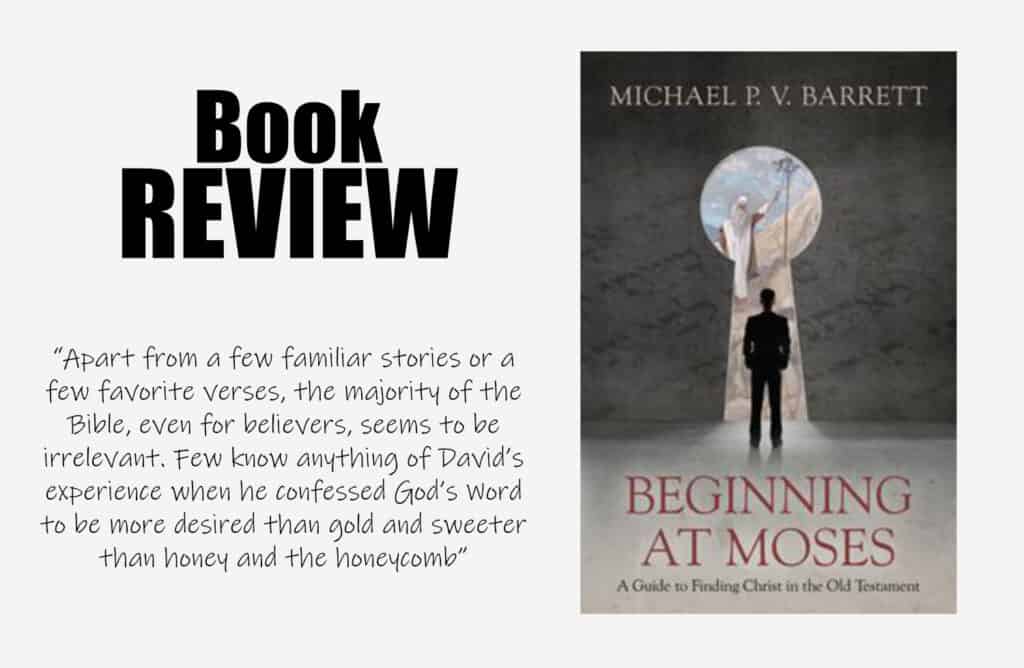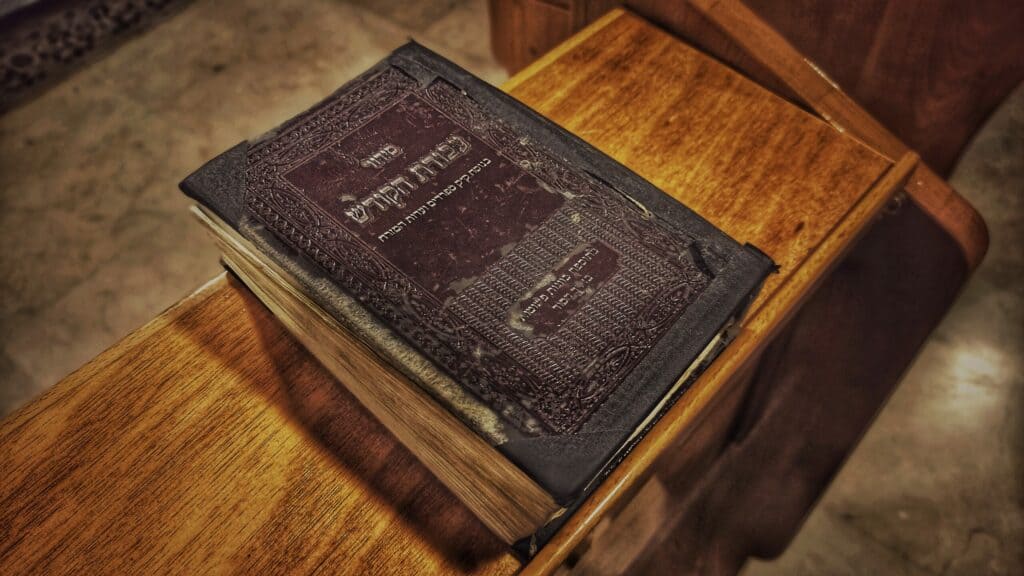Introduction
The New Testament claims to be “God-breathed” (2 Tim 3:16) and, by extension, implies that it is inerrant, infallible, and authoritative. However, there are many cases where contradictions seem to present themselves within the text. This paper aims to examine some of the apparent contradictions within the Gospel accounts to assist the reader in their reconciliation between what appear to be errors and the New Testament’s claim to be inerrant and inspired by God.
Preliminary Considerations
Before examining some of the alleged contradictions within the text, several preliminary topics must be established. First, a discussion of the importance to the Christian faith if contradictions exist. Secondly, there must be a definition of what qualifies as a contradiction. Thirdly, there must be an establishment of what lengths the scholar can go before harmonizing the text goes beyond being a reasonable solution. Fourthly, an analysis of the attitude necessary to provide biblical answers to these passages.
Impact of Contradictions on Christianity
Contradictions within the Gospel accounts present themselves as a direct threat to the Christian faith. This threat is alluded to by the Apostle Paul when referencing the resurrection. He claims that if these events did not happen, we are “of all people most to be pitied” (1 Cor 15:19). The secular world recognizes the importance of the contradiction in the New Testament; Donald Morgan states, “The evidence demonstrates that the Bible cannot be the literal, complete, inerrant and perfect work… because the Bible reflects every important belief of traditional Christianity – the foundation of Christianity itself rests on shaky ground.” If the Bible were created by an all-knowing, powerful, and honest God, it could not contain contradictions that cannot be reconciled. These passages would prove to be the best evidence against the Bible being a theanthropic book.
Qualifications of a Contradiction
The 1828 KJV Dictionary defines a contradiction as “To oppose by words; to assert the contrary to what has been asserted, or to deny what has been affirmed.” When applying this definition to hermeneutics, a contradiction can be defined as when two or more verses or accounts state something that cannot be simultaneously true. These are the passages in the Bible that directly oppose one another in matters of doctrine and ethics. (c.f. Num 23:19; Titus 1:2; Heb 6:18.)
There are several categories of inconsistency that do not qualify themselves as a contradiction. First, a difference in perspective does not necessitate a contradiction. R. C. Sproul comments about variation within the Gospel accounts:
We’re familiar with how two eyewitnesses might see the same crime but report it differently. They remember different things about the event because of their different perspectives, but the details of the two accounts don’t conflict. In fact, the authorities like to have many witnesses to a crime because comparing the stories gives a fuller view of what happened. The same thing happens when historians research an event and read eyewitness accounts of it.
Having been created unique and in God’s image, humans see the events surrounding us with different cultural influences, personalities, and other tendencies. The Gospel witnesses were not immune from this, and as such, their accounts, while still being true, likely differ in their retelling.
Secondly, the authors took liberties in rearranging the events to emphasize different aspects of Christs’ life and ministry. Matthew’s gospel was aimed primarily at the Jew, Mark on those unfamiliar with Judaism, Luke toward the intellectual, and John’s intention to show Christ as God become a man. John directly addresses this issue in John 20:30–31 when he states that “ …Jesus did many other signs in the presence of the disciples, which are not written in this book;” Whether these additions, subtractions, and rearranging of the stories has other implications toward the inerrancy, infallibility, and reliability of the text is out of scope for this paper. These types of editorial changes do not constitute a contradiction but rather reflect the author’s tendenz.
Lastly, variations that occur due to scribal errors do not merit the title of contradiction. These errors present themselves in the various manuscripts that were created during the copying and transmission process. These are mistakes common to humankind and occur in 6 major categories: homeoteleuton, homeoarchy, haplography, dittography, contamination, and metathesis. While much can be said about these types of errors, they are just errors, not contradictions. Scribal errors do not present a different theology or ethic that is opposed to one another.
Reasonable Harmonization
When harmonizing the Scriptures, we must engage our reason. While the Scriptures are divine, God created them with the intent of them being understood (2 Tim 3:16). If the Bible was not created to be understood, then it, being given in human words, through human means, and preserved through time, would be a pointless effort and means for God. While presenting a harmonization of the Scriptures, James White makes a statement that will be used when considering what a reasonable harmonization is, he writes,
Finally, it must be stated that part and parcel of dealing with almost and ancient or even modern writing is the basic idea that the author gets the benefits of the doubt. It is highly unlikely that a writer will contradict himself within short spans of time or space… The above explanation is perfectly reasonable, it coincides with the known facts, and does not engage in unwarranted “special pleading.”
Firstly, the author must be given due respect as being intelligent enough to remember his previous writings; this eliminates passages such as Acts 9 and Acts 22 where Luke would have known what he had previously written. Secondly, while explanations may take liberties with what the text omits, it must, at a minimum, include and agree with the facts that are given. Lastly, the reconciliation must avoid special pleading. Special pleading is a fallacy where when a rule is broken, the accused is given an exception due to some special and unique circumstance. This argument directly avoids needing to use reason to reconcile the passages. While many passages are difficult, and some require a measure of faith, Christians should seek to apply reason alongside faith when reconciling the Scriptures.
The Proper Mindset for Handling Contradictions
There are seven attitudes the critic must establish before he can properly handle alleged contradictions within the Scriptures. Firstly, the reader must honestly approach the Scriptures; he cannot simply ignore the alleged problems and be dishonest about their existence. Secondly, the reader must be humble. The reader must recognize the human limitations in their understanding; both sin and the chasm between God and man render perfect understanding unachievable. Thirdly, the reader must be determined to find a solution. Often solutions are not easily found, and if they were, then there would not be a claim by Bible critics about these matters.
Fourthly, the reader must not fear difficult passages. The Bible will not fail due to the reader’s lack of understanding, the power of God upholds it, and his plan will not be thwarted by passages that may not be explainable by us. Fifthly, the reader must be patient; solutions to some passages may elude the reader for years, but God will certainly provide the answers at the culmination of time. Sixthly, the reader must be scriptural in their approach. Often other passages of Scripture shed light on the problematic passages. Lastly, the reader must be prayerful. There is no better place to gain an understanding of a particular passage than from the one who penned it.
Biblical Harmonization for Alleged Contradictions
The remainder of this paper will focus on providing a reasonable harmonization of several passages within Scripture. The passages that will be discussed are Matthew 28:2–7, Matthew 10:9–10, Mark 15:25, and Matthew 9:18. These passages provide discrepancies that qualify as contradictions per the previous qualifications. Many more exist within the text, but these four are especially important due to their existence within the Gospel accounts.
The Number of Angels at the Tomb
The first set of passages that will be addressed are Matthew 28:2–7 and John 20:11–12. In Matthew’s account of the empty tomb’s discovery, he reports that a single angel appears to Mary to give exposition concerning the empty tomb and resurrection of Christ. John, in a parallel passage, presents an account where two angels appear to Mary. This contradiction can be easily reconciled via a careful reading of the text.
In Matthew’s account, he speaks of both Mary Magdalene and the other Mary going to see the tomb of Christ. The event of an angel descending from Heaven occurs outside the tomb. The angel then speaks to them, saying, “He is not here, for he has risen, as he said. Come, see the place where he lay” (Matt 28:6). After this event is when we read John’s account of the event, John states that “Mary stood weeping outside the tomb, and as she wept she stooped to look into the tomb. And she saw two angels in white…” (John 20:11). Mary had stayed behind after the rest of the disciples and women left. She is the only one who witnessed the two angels sitting where Jesus had been laid to rest. R. A. Torey summarizes the events as follows:
It was not the group of women at all that saw these two angels, but we are distinctly told it was Mary alone. Mary started out with the other women for the sepulcher, got a little ahead of the group, was the first to see the stone rolled away from the tomb (John 20:1), immediately jumped at the conclusion that the tomb had been rifled, and ran at top speed to the city to carry the news to Peter and John (John 20:2). While she was going into the city, the other women reached and entered the tomb, and the things recorded in Matthew, Mark and Luke occurred.
The inconsistencies in the accounts may seem to imply that there is a reliability problem within the text, but as R. A. Torey continues:
…these apparent contradictions are themselves proof of the truth and the accuracy of the accounts. It is evident that these four accounts are separate and independent accounts. If four different persons had sat down to make up a story in collusion of a resurrection that never occurred, they would have made their four accounts appear to agree, at least on the surface.
While it is being established during this account, the concept that three different people wrote these accounts is an important idea to remember as the study of these verses continues.
The Equipping of the Disciples
The account of Jesus’ commissioning the 12 Apostles to go forward in ministry occurs in Matthew 10:9–10, Mark 6:8–9, and Luke 9:1–6. In Mark’s account of the event, the Apostles are told to “take nothing for their journey except a staff; no bread, no bag, no money in their belts; but to wear sandals and not to put on two tunics” (Mark 6:8). While Matthew and Luke’s account of the event seems to imply that they are to take not even a staff.
Several theories try and reconcile this contradiction. First, Palestinian shepherds carried two types of staff, and Mark allows one of them while Matthew and Luke forbid the other. Second, Augustine taught that there was a physical staff and a spiritual staff. Thirdly, Charles Burney reconciles the event as a scribal error due to a one-letter difference between two words. Fourth, in some manuscripts, Matthew uses a plural form of staff, implying the disciples could not accumulate multiple staves.
This last solution seems to be the most probable. This contradiction exists in the King James Version of the Bible, but a more accurate translation in the ESV remedies this issue. This passage’s ESV translation uses the word acquire to describe Jesus’ command to the Apostles in Matthew’s book. While this solution may seem to border on the line of special pleading, there is a clear context as to why this solution is most likely.
The reader must first ask what the goal Jesus had when he sent the Apostles on this mission. In Matthew, Mark, and Luke’s accounts, the same theme can be found; Jesus wants the disciples to leave quickly to accomplish the task they had been given. Matthew and Luke imply that the Apostles are not to take the time to get another staff before the journey, while Mark implies that the Apostles take what they have and leave. Either way, the Apostles need to have their focus on preaching the Word and healing the sick, knowing that both God and those they help will provide for them because the “laborer deserves his food” (Matt 10:10).
Time of Jesus Death
The record of Christs’ crucifixion and death is likely the most important and impactful contradiction raised within the Gospel accounts. The resurrection is the cornerstone of the Christian faith, and a provable contradiction in this account would undermine many Christians’ faith (1 Cor 15:17). Mark and John seem to present two different times for the death of Christ. Mark presents a remembrance of the “third hour” (Mark 15:25) while John states that it was “about the sixth hour” (John 19:14).
The ESV translation of John 19:14 presents the best clue to the reconciliation of this alleged contradiction. The word about is precisely the clue needed to reconcile these texts. Unlike the previous examples, an understanding of the ancient near east culture sheds light on these verses. Timekeeping in this era of human history was imprecise. The cultural tendency to assume, even unconsciously, that the Jews in the 1st century could accurately keep track of time causes readers to see a contradiction where none exists.
Ancient timekeeping was an imprecise effort that commonly used guessing and generalizing to give a somewhat accurate depiction of time. Calvin explains this well:
It is plain enough from other passages that the day was at that time divided into four parts, as the night also contained four watches; in consequence of which, the Evangelists sometimes allot not more than four hours to each day, and extend each hour to three, and, at the same time, reckon the space of an hour, which was drawing to a close, as belonging to the next part. According to this calculation, John relates that Christ was condemned about the sixth hour, because the time of the day was drawing towards the sixth hour, or towards the second part of the day. Hence we infer that Christ was crucified at or about the sixth hour; for, as the Evangelist afterwards mentions, (ver. 20,) the place was near to the city. The darkness began between the sixth and ninth hour, and lasted till the ninth hour, at which time Christ died.
An understanding of the culture and society at the time of writing clears up this contradiction. Readers often read the details of an event into the modern world rather than building an understanding with a proper historical context.
Jarius’ Daughter
The final contradiction that will be discussed in the Gospel accounts is whether Jairus’ daughter was alive or dead when Christ went to heal her. There are three accounts of this event; in Matthew 9:18, we are told that Jairus’ daughter was dead, and he was pleading for the Lord to heal her. In Luke 8:42 and Mark 5:23, the authors report that Jairus’ daughter was dying or at the point of death.
Of first consideration is what the focus of each writer’s account was. Matthew’s account of this moment is 37% the length of Mark’s. To keep his focus on other parts of Jesus’ ministry, Matthew cuts details in the account to keep it succinct. Matthew seems to omit the entire exchange with Jairus in Mark 21–24 and picks up his exposition during a second exchange with Jairus, which happens after Jairus’ servants come to break the news that his daughter had died. Michael Emadi states,
What Matthew is communicating is that when Jesus arrives at the house he knows that the girl is dead. Mark gives us the fuller account such that the man didn’t know she had died but on the way he found out she had died so that when Jesus arrives at the house they know she is dead. Matthew has chosen to bring that information to the beginning in order to succinctly tell the story that Jesus raised a girl from the dead without giving all the details. Mark tells the same story but provides more information about the story itself.
Culturally, the difference between almost dead and dead was exceedingly small; without medical facilities, those close to death were not given hope of recovery. Craig Blomberg states, “What is more, in a world without modern medical monitors to establish the precise moment of expiry, there is not nearly so much difference between Matthew’s arti eteleutēsen in v. 18 (which could fairly be translated “just came to the point of death”; cf. Heb 11:22) and eschatos echei in Mark 5:23 (which could also be rendered “is dying”).” The point of the account was to show Jesus’ power over life and death. Jairus’ daughter was as good as dead outside of the power and work of Christ, so while Matthew skips earlier exposition by Jairus, he accurately recounts the same event.
Conclusion
While many difficult passages exist in Scripture, some of which seem to contradict each other, the interpreter must take caution before jumping to a conclusion that undermines its inerrancy. The foundation that must be established before attempting to reconcile the Scriptures is that they are a cohesive unit, carried through time by the godhead. Once this foundation is established, the reader must approach the Scriptures honestly, humbly, determinedly, fearlessly, patiently, scripturally, and prayerfully.
These foundational attitudes of interpretation lead the reader toward a reasonable harmonization of the Scriptures faithful to both the meaning of the text and Spirit-led reasoning. Every seeming contradiction within Scripture has a solution. Though the reader may face difficulty aligning their heart and mind to a solution, reasonable harmonization exists. One should pray for understanding and peace from God about those passages that do not have a solution that satisfies them. The reader should continue to pursue an understanding through careful study and prayer.



